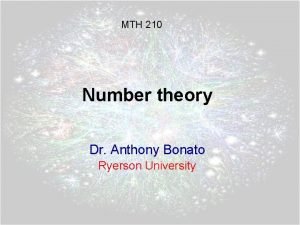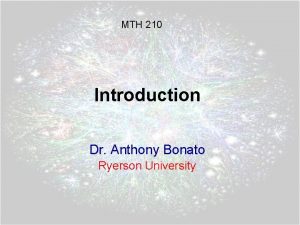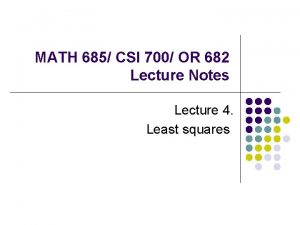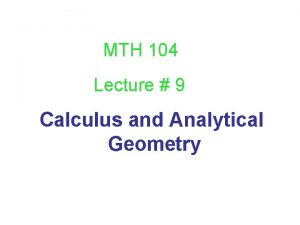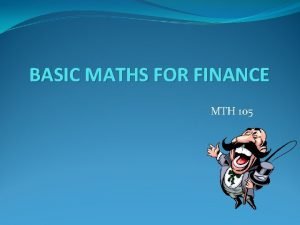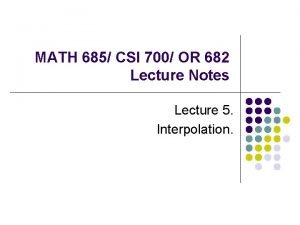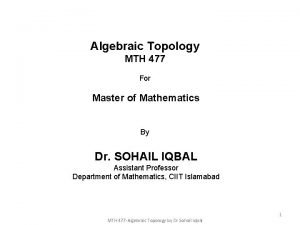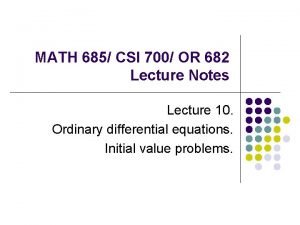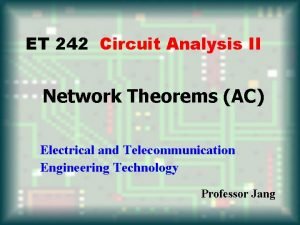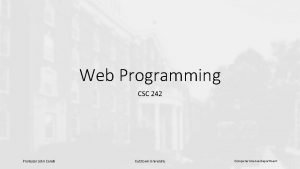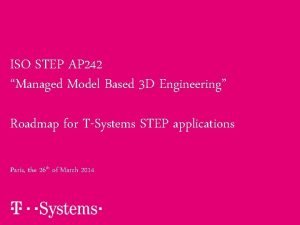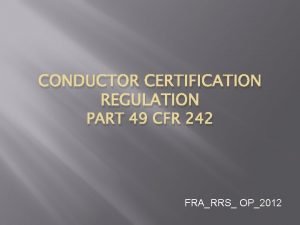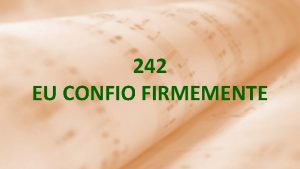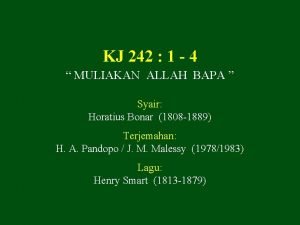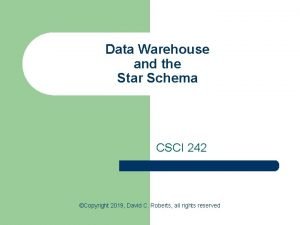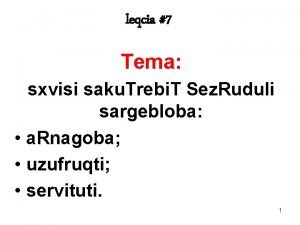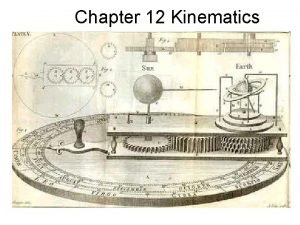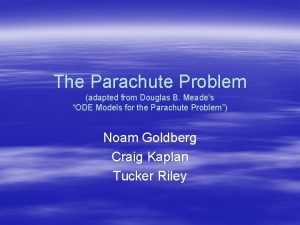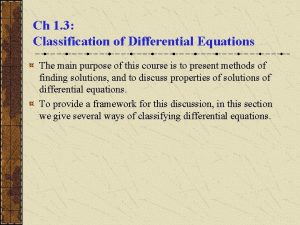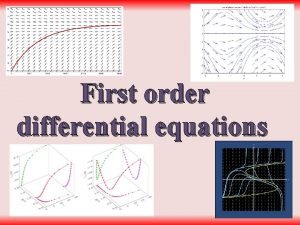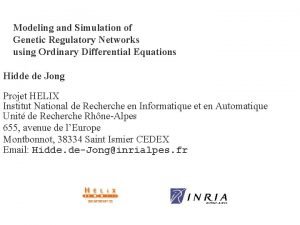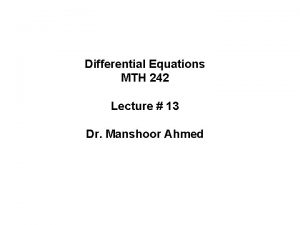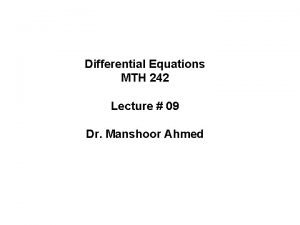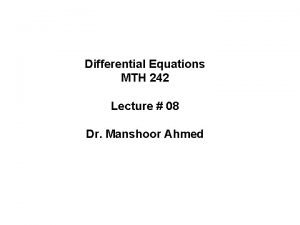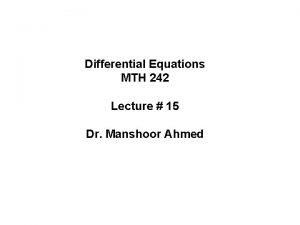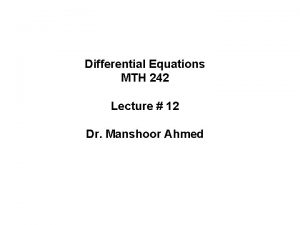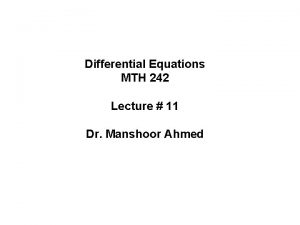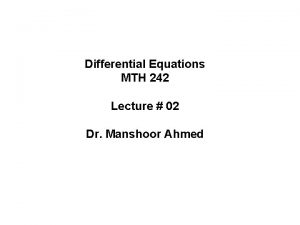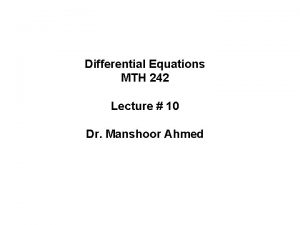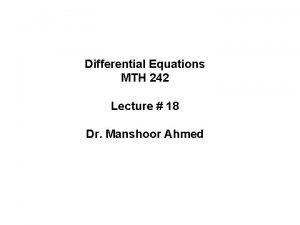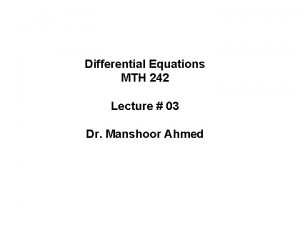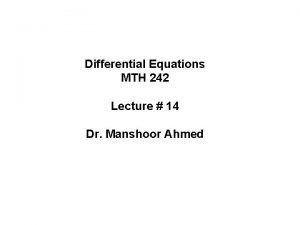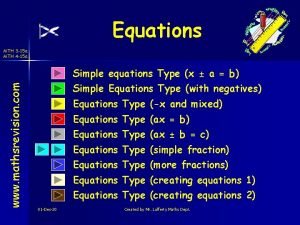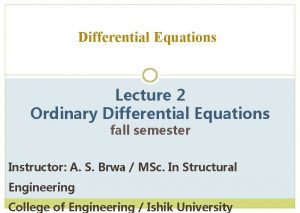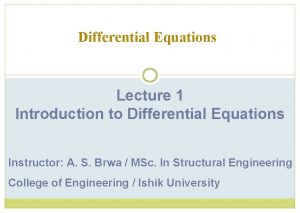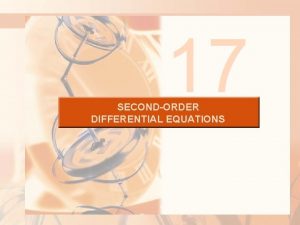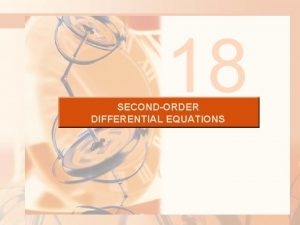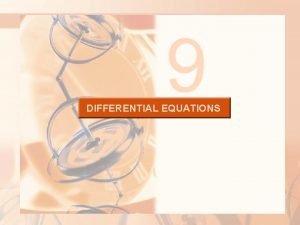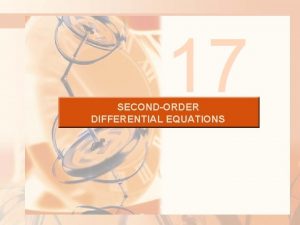Differential Equations MTH 242 Lecture 04 Dr Manshoor






























- Slides: 30

Differential Equations MTH 242 Lecture # 04 Dr. Manshoor Ahmed

Summary (Recall) • Separable differential equation. • Homogeneous function and homogeneous differential equation. • Equations reducible to homogeneous.

Exact differential equation .



Method of Solution: If the given equation is exact then the solution procedure consists of the following steps: Step 1. Check that the equation is exact by verifying the condition Step 2. Write down the system Step 3. Integrate either the 1 st equation w. r. to x or 2 nd w. r. to y. If we choose the 1 st equation then The function is an arbitrary function of y, integration w. r. to x; y being constant. 6

Step 4. Use second equation in step 2 and the equation in step 3 to find. Step 5. Integrate to find and write down the function F (x, y); Step 6. All the solutions are given by the implicit equation Step 7. If you are given an IVP, plug in the initial condition to find the constant C. Caution: x should disappear from . Otherwise something is wrong! 7











Integrating Factor Technique If the equation is not exact, then we must have Therefore, we look for a function u (x, y) such that the equation becomes exact. The function u (x, y) (if it exists) is called the integrating factor (IF) and it satisfies the equation due to the condition of exactness.

Example 1 Show that is an integrating factor for the equation and then solve the equation. Solution: Since Therefore So that and the equation is not exact. However, if the equation is multiplied by then the equation becomes

Now Therefore So that this new equation is exact. The equation can be solved. However, it is simpler to observe that the given equation can also written or Hence, integrating, we have

Example 2 Solve the differential equation whose integrating factor is x. Solution: The given differential equation can be written in form Therefore, Now and

Multiplying the given equation with the IF, we obtain which is exact. 1. Since , the equation is exact. 2. We find F (x, y) by solving the system 3. We integrate the first equation to get 4. We differentiate w. r. t y and use the second equation of the system in step 2 to obtain

Example Solve , with IF Solution: Here The equation is not exact. The IF is Multiplying the equation by y, we have or or Integrating, we have which is the required solution.

Rules to find I. F





Some questions for practice Determine whether the given differential equation is exact. If it is exact, solve it. solve the initial value problems.

Summary • Total differential. • Exact differential equation. • Solution Method for Exact differential equation. • Differential equations which are not exact. • Integrating factor.
 Mth 210
Mth 210 Mth 210
Mth 210 Mth 685
Mth 685 Mth 104
Mth 104 Mth 105
Mth 105 Mth 685
Mth 685 Mth
Mth Mth 685
Mth 685 01:640:244 lecture notes - lecture 15: plat, idah, farad
01:640:244 lecture notes - lecture 15: plat, idah, farad Et 242
Et 242 Carelli kutztown
Carelli kutztown Step ap 242
Step ap 242 49 cfr 242
49 cfr 242 I^242
I^242 Cs 242
Cs 242 Et 242
Et 242 Eu confio firmemente que no céu vou descansar
Eu confio firmemente que no céu vou descansar Is-242.b
Is-242.b Manulife vip room contact
Manulife vip room contact Lagu muliakan allah bapa
Lagu muliakan allah bapa Schema 242
Schema 242 Carrsh
Carrsh Series parallel resonance
Series parallel resonance Sxvisi svili
Sxvisi svili Gezang 239
Gezang 239 Me 242
Me 242 Parachute problem differential equations
Parachute problem differential equations Definition and classification of differential equations
Definition and classification of differential equations Ode solution methods
Ode solution methods First order ode
First order ode Differential equations
Differential equations
